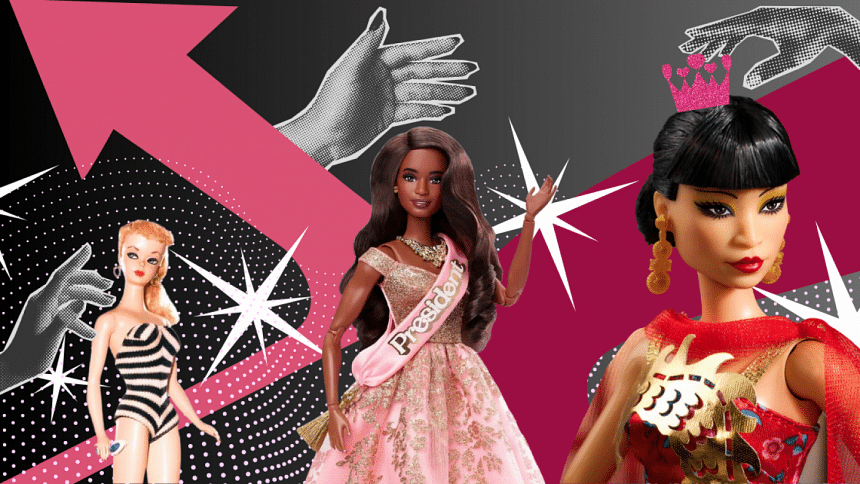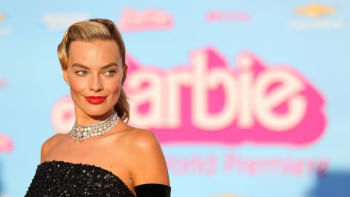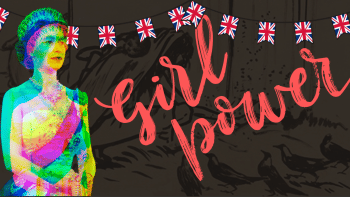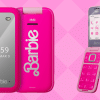Fuchsia feminism in a Barbiecore world

When I saw the promotional poster for the new Barbie movie, my first thought was to dig out all my old Barbies. I learnt that they had all been thrown away – I only managed to find one doll. This one was never thrown away because I actually never played with it; it remained in mint condition in its original box. Unlike all the Barbies I played with, this one did not have blonde hair or white skin. Instead, it had black hair and dark skin. I recalled how I had kept this doll away because the younger me thought it was not an original Barbie doll. Barbie dolls were blonde and white, according to me.
Although Barbie was an enormous part of my childhood, my adolescent self drifted apart from it significantly. None of the cool girls I watched on TV wore Malibu pink or liked dolls. Adopting so-called masculine hobbies was considered cool instead. But it was also more than that. Barbie seemed misogynistic through my growing understanding of feminism, rudimentary as it was. Barbie only cared about fashion and dressing up. Barbie lived in a bright pink house. Now, I adored pink and had a genuine interest in fashion. But pink was negatively associated with being "girly," and society told me that aspiring for a career was feminist, not dressing up. So I gave up on both Barbie and pink.
Fast forward to recent times, my screen became splattered in pink from the Valentino Fall 2022 collection. Celebrities of all gender conformations adorned themselves with hot pink and fuchsia. At the same time, Barbie is once more the talk of the town. Every time I get on a social media platform, I am bombarded with campaigns from various brands that are now selling Barbie-themed clothing and accessories. From brands like Gap, and Zara, to even Crocs – every brand seems to have a Barbie collection. This aesthetic of maximalist dressing and ultra-feminine clothing is now known as Barbiecore online. Femininity no longer has the same negative connotation.
So, how did Barbie undergo this remarkable transformation: from being criticised as a symbol of perpetuating unrealistic beauty standards and misogyny, to embracing inclusivity and evolving into a celebrated feminist icon for girls today?
If we go back to the start, Ruth Handler, co-founder of Mattel, was inspired by her daughter's love of paper dolls to create an adult-figured doll. This was back in 1959. At the time, most children's dolls were representations of infants. Handler's idea was groundbreaking as it challenged the traditional view of what a doll should be. With infant dolls, play was confined to girls assuming a nurturing figure. This changed with Barbie. A Barbie doll could be anything, and these dolls had careers ranging from that of astronauts to politicians to fashionistas.
So, did Barbie really undergo a massive transformation? Or has she just been repackaged to promote maximalism – another way to exploit consumers?
From an external perspective, the concept appears to be feminist. But one look at the doll's general appearance tells a different story. Just like my younger self believed that Barbie was supposed to look a certain way, kids who grow up playing with Barbie but don't grow up looking like her (which is almost all girls) end up with body image issues. They end up questioning why they do not look a certain way. So, although Barbie could be anything, Barbie did not look like everyone.
But this void was also bridged with Mattel's website now boasting 35 different skin tones, 97 different hairstyles, and nine different body types (and counting) for Barbie dolls. With this transformation of the brand's image, it's a seemingly happy ending and the end of the era of "not like other girls," because being "girly" and wearing pink is now celebrated.
The colour pink has long been associated with femininity, and it has often been used to stereotype and pigeonhole women. However, with the hype surrounding the Barbie movie, there is now a massive resurgence of "pink fashion," a trend that is largely led by the younger generation, who are unafraid to embrace their girly side. This growing movement of women who are reclaiming pink and "girliness" as a way to express their own personal style and empowerment is definitely a positive development for a world that has forever looked down on anything even remotely associated with femininity.
At the same time, Mattel's stock price has also increased by 15 percent in the past month, according to a recent Yahoo Finance report. For comparison, Meta stocks went up by 12 percent and those of Apple by four percent. Similarly, the other companies banking on this hype, with their respective Barbie collections, are companies that are possibly not even paying their workers liveable wages.
So, did Barbie really undergo a massive transformation? Or has she just been repackaged to promote maximalism – another way to exploit consumers? I found myself asking these questions again. Capitalism has a long history of appropriating and commodifying social movements. Naturally, feminism is no exception. After all, the brands benefiting from "pink-washing" are not upholding feminist values.
When I go on any social media platform, I notice two things. First, the deluge of ads (perhaps because I am the exact target audience) consisting of every possible Barbie-themed thing you can imagine – from hairbrushes to furniture for your very own Dreamhouse. Second, an increase in the number of people who are confident in being their "girliest" self. Even the most masculine-presenting person seems interested in catching the new hot-pink-filled Barbie movie in theatres. This stands in stark contrast to how movies primarily targeting women were perceived by the general public even a decade ago.
Hence, for just an infinitesimal moment, I would like to rejoice in the acceptance and embracing of femininity before I go back to wondering who truly is capitalising off this trend and the consequences of this maximalist culture.
Tasnim Odrika is a biochemist by day and a writer by night. She can be reached at [email protected].


 For all latest news, follow The Daily Star's Google News channel.
For all latest news, follow The Daily Star's Google News channel. 












Comments